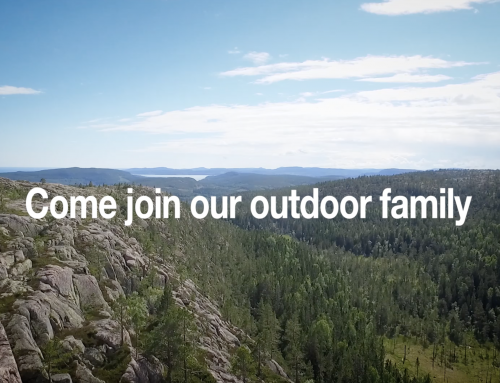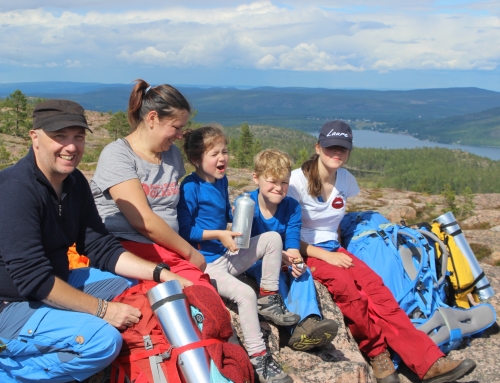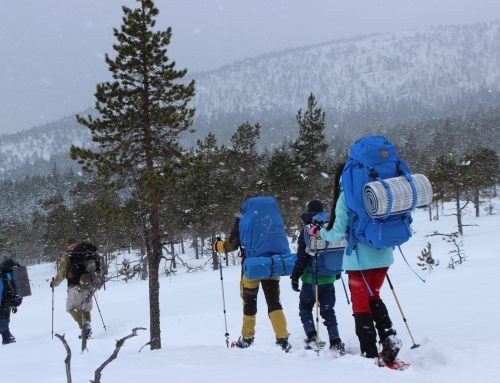We have noticed that (especially when it is cold) many people use jackets and trousers that are always lined and insulated. These jackets and trousers are inherently waterproof, windproof and warm. Sounds perfect, of course, until you start being active, exerting yourself, your body temperature rises… and then suddenly the clothes start to feel too warm, you start sweating too much, you’re wet and overheated. And the worst comes when you stop or take a break, and suddenly you cool down, your clothes are wet, you are wet and as a result you are cold and miserable. Moreover, this heating and cooling only costs a lot of energy. These products are also often bulky, difficult to pack and simply not very flexible and versatile in use.
A better and more flexible way to cope with the changing conditions during high-intensity activities is the three-layer system. It consists of three layers of clothing that complement each other and that you can change in relation to each other depending on the conditions and intensity of your activity. As we have already written, it is best to buy a system that is coordinated. (see previous tips)
You can also apply the 3-layer system to your hands, feet and head.
Layer 1 – Base layer
The first layer forms the basis of our entire system. It consists of a moisture-regulating layer that is worn directly on the body. The layer should have the ability to wick moisture away from your body, keep you warm or cool, and be quick-drying.
I always choose Merino wool as the first layer. It has good insulating properties. Is warm in winter and cool in summer.
Dries quickly. Also provides warmth when it is damp (you can safely walk with it through a short shower). And you will see that you will simply walk it dry afterwards.
It gives bacteria less chance. So less chance of irritation spots under, for example, the armpits or blisters on the feet.
It is an investment, but one that is worth it. There is a lot of difference in thickness and wear resistance. Our favorite is Woolpower.
Layer 2 – Middle layer
The purpose of the second layer is to insulate. This layer must be able to keep the body warm and transfer sweat moisture from the base layer to your outer layer as quickly as possible. Different materials are used in this type of clothing, such as fleece, merino wool, down or synthetic fibers. A softshell with a windproof membrane will often also suffice. I usually use an overshirt in the summer, and a thicker (400) merino wool sweater or cardigan in the winter. I also always have a lightweight insulating jacket with me. It weighs nothing and keeps you fantastically warm.
Middle layers are available in many different insulation values. If you want to be prepared for different circumstances, it is smart to invest in middle layers in different values. You can easily pack the warmer layer in your backpack for when conditions are colder (or conversely, the less warm version for warmer conditions) or even wear it together when it gets really cold. As always, it’s wise to have several options to deal with changing circumstances.
Layer 3 – Outer layer
The outer layer is the hardshell. This layer is wind and waterproof and is the final step in transporting perspiration from your skin to the outside air. Examples of waterproof and moisture-permeable fabrics are, for example, Gore-Tex or Eco Shell. The outer layer is intended to protect you from the elements, so that the properties of the mid layer and base layer remain functional. Typically, these jackets will have no lining or insulation of their own and focus on the primary function of protecting you from the conditions.
For certain conditions (when you don’t expect too much rain), you can also wear a softshell or merino wool as an outer shell, which combines layers 2 and 3.
And how should all this be done in practice?
Well, you can only learn through practice. So pack all your layers in a backpack and head out in your area during different weather conditions. This way you can test and experience everything that suits you and the relevant weather type. And because you are close to home, you will be back in a protective environment in no time.
See you outside!





